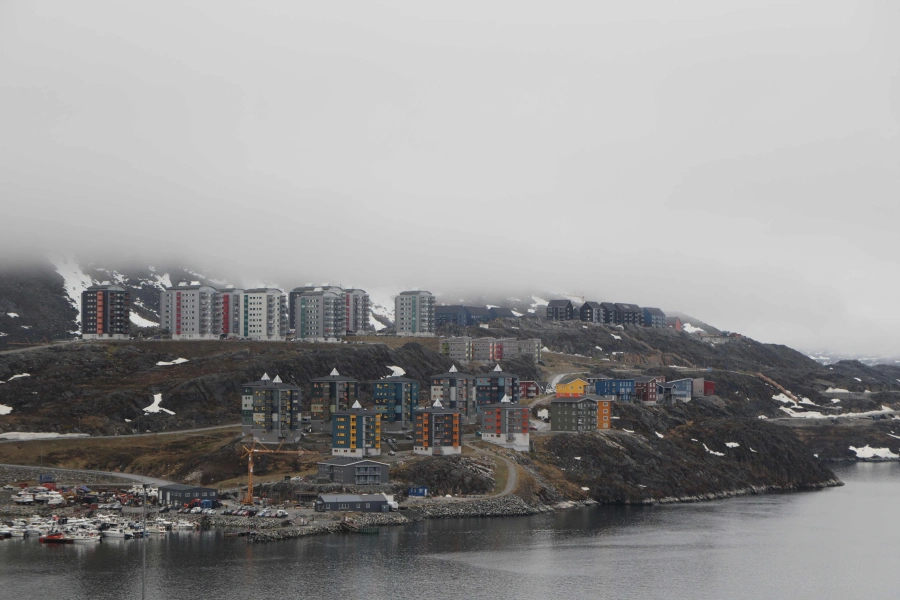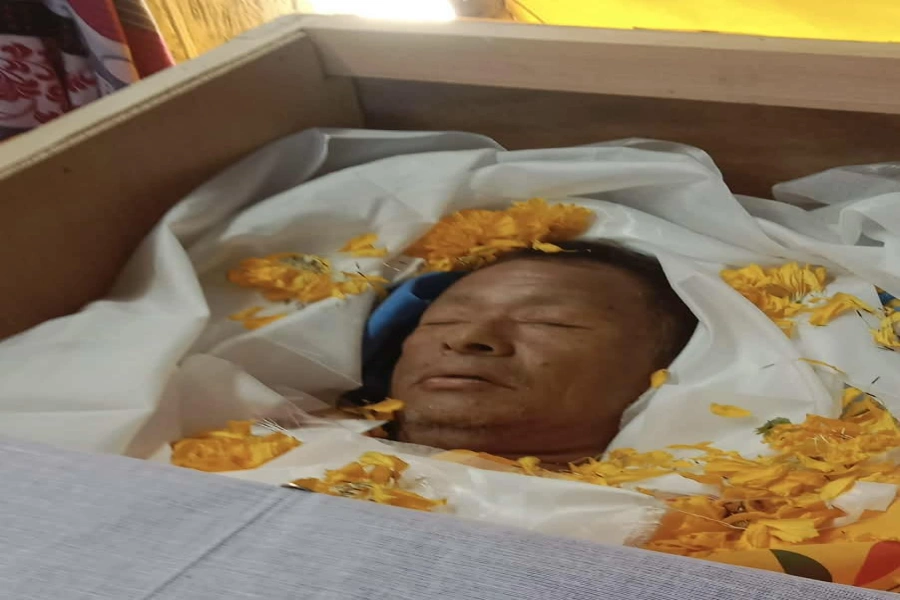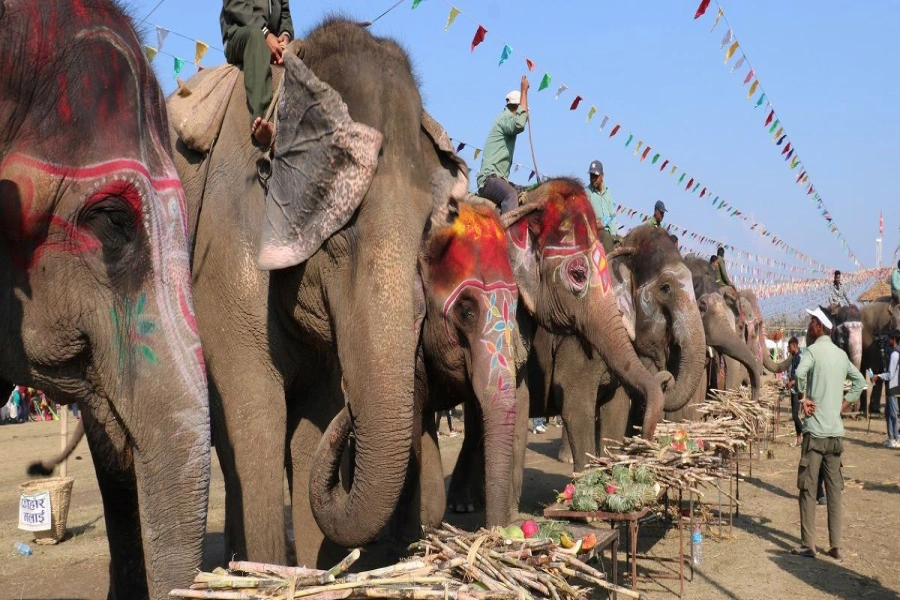Under the scorching heat of the extreme sun, my friend and I embarked on a journey to Meghauli, departing from Mangalpur, Chitwan. Despite the oppressive heat, our eagerness to explore this new destination propelled us forward. Following the road signs and seeking guidance from locals, we navigate our way through the junctions. As a pillion rider on the scooter, I had the freedom to observe our surroundings. The midday heat seemed to deter only a few people from venturing out onto the roads. The extensive rain-fed agricultural terrain was in dire need of water to nurture the thriving vegetables and crops. Amidst the landscape, few patches of green cornfields and rice paddies flourished where irrigation was accessible.
Golaghat, positioned at the convergence of the Narayani and Rapti rivers and neighboring the renowned Chitwan National Park, finds its home in Ward no. 28 of Bharatpur Metropolitan City, emerging as a significant tourist hotspot in Chitwan. During our visit, gusts of wind swept through, carrying dust and fine sand similar to the smoke of a jungle fire. By around 2 pm, we found ourselves preoccupied with shielding our eyes from the swirling particles. The dusty conditions hindered our ability to explore further, prompting my curiosity about how the local residents cope with the dusty and stifling heat waves that persist throughout the day.
Youth leaders to pressure govt, businesses for urgent action to...

The Red Cherry Pepper Chilli (Dalle Khursani), known for its higher cost compared to regular chili, wilted in the vast fields, leaving me pondering over the substantial financial losses incurred due to the drought. Similarly, as I observed the cornfields, I could anticipate the impending loss for the next farmer if rain continued to elude us. It's a distressing sight to witness crops wither away while simultaneously witnessing the depletion of groundwater levels. Conversations with locals revealed concerns about diminishing flow from tube wells and bore water sources, further exacerbating the situation.
I have a vivid recollection of the drinking water scarcity crisis that gripped Birgunj due to the lowering of ground water table, which garnered extensive coverage from the national media last year. I witnessed an influx of local residents who flocked to the Birgunj Metropolitan city office seeking to connect drinking water taps. In many households, members queued up at neighbors' homes, where deep water boreholes were utilized to extract groundwater for everyday use. This practice became necessary due to the dwindling groundwater levels during the dry season. As an administrative response of the city, the residents were permitted to dig tube wells up to 30 meters deep, as groundwater could be easily accessed at that depth. While people managed to cope with their daily water needs by relying on others, concerns arose about the fate of their crops and vegetables. This situation has left many deeply worried about the impact on agricultural livelihoods. A similar scenario is unfolding in Kohalpur Municipality, Banke, where tube wells are running dry due to the declining water table. The Terai region of Nepal is facing water shortage due to a long spell of drought.
The long spell of drought also affects the air transportation in Bharatpur. Many flights are getting canceled due to low visibility caused by heavy pollutant particles in the air. We witnessed controlled burning in different places, especially in savanna and small open space, expecting regeneration of plants to feed the herbivores in the national park. The general local practice is burning fields after crop harvesting, especially wheat, during the dry season to maintain soil nutrients. But the air became fuggy, eyes got irritated and transportation halted. As locals, they sense the fuggy/ burning smell. If it rains, it would not happen. Raindrops act as natural groundwater recharge which is essential for maintaining a sustainable water supply. It replenishes the water stored in aquifers, which is then available for extraction through wells, springs, or other groundwater sources. Chitwan and the Terai region of Nepal are waiting for the rain.
To mitigate the impact, implementing policy reforms is essential. The underground water extraction policies must be grounded through on-site testing. Additionally, halting burning practices is crucial, for that local government bodies should spearhead initiatives to educate communities on air pollution and explore alternative solutions. Ensuring every household connects to government water taps will bolster resilience during adverse conditions.







































